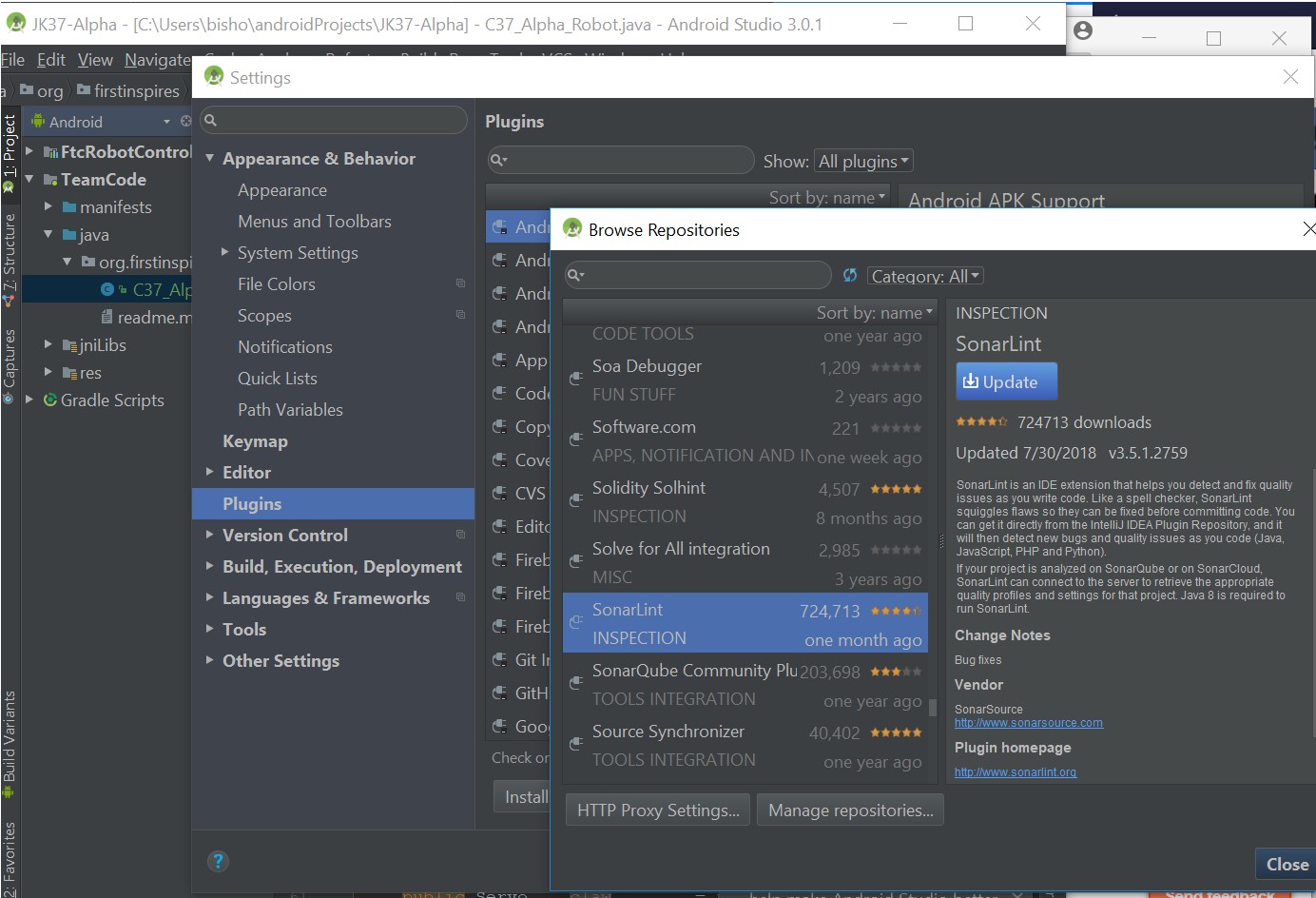
- FTC ANDROID STUDIO TUTORIAL HOW TO
- FTC ANDROID STUDIO TUTORIAL INSTALL
- FTC ANDROID STUDIO TUTORIAL FOR ANDROID
- FTC ANDROID STUDIO TUTORIAL ANDROID
The tool itself it embedded into a Google Colab Notebook. I have created a tutorial video for the tool below. After about two weeks, lots of reading, lots of coding, lots of mistakes, lots of issues, etc., I finally have a working tool that all teams of FTC can use to create their models.
FTC ANDROID STUDIO TUTORIAL HOW TO
So, I set out to learn how to make my own TensorFlowLite (TFLite) machine learning models for Object Detection. (This might have to do with the management of private student information) And 2) my school district does not allow students to have a FIRST Inspires account. This is limiting for two reasons: 1) some students across the world may not be on an official team and want to learn about machine learning. To access this, teams need to have a login with the FIRST Inspires website. Most of my students prefer the OnBot Java setup for its ease of use while still allowing them to use all of their programming skills from AP CSA.įTC uses TensorFlowLite Object Detection and has created FIRST Machine Learning Toolchain (FTC-ML) so that teams can train their own machine learning models.
FTC ANDROID STUDIO TUTORIAL ANDROID
But this had a very steep learning curve that required students to use Android Studio when making their code. We have also used OpenCV for object detection in the past. In the past we have used Vuforia and their VuMarks technology. This type of task has been apart of FTC for about 4 or 5 years now. This time I spent my time learning about and creating a tool for FIRST Tech Challenge (FTC) teams to train their robots to recognize objects using a camera. If you find that these aren’t working for you, please let us know.I spent my 2022-2023 Winter Break coding. Check them, and then go through the installation. We don’t want any of them, so start out by hitting “Deselect All.” At the time of writing, the following list will work for the latest version of the FTC App SDK (16.03.30).
FTC ANDROID STUDIO TUTORIAL INSTALL
When you open this Standalone SDK Manager, it will automatically check a bunch of packages it would like to install by default. After that, use the “Launch Standalone SDK Manager” link at the bottom. To install them, you can open Android Studio (go ahead and import the FTC App SDK as an Eclipse/Gradle project, if it asks), and head to Tools > Android > SDK Manager.

These are libraries which help the FTC App work on various Android Devices. SDK PackagesĪfter Android Studio is installed, there are several add-on components which also need to be installed. Save the FTC App in a smart location with other FTC-related files. Getting the latest versions of everything is a good idea. In general, you’ll want to install everything in the order listed above. To get the latest “stable” release, you can use the green “Clone or Download” button and say “Download ZIP.” If you want a beta version of the SDK, you may wish to go to the selection that reads “Branch: master” and choose “beta” first. When we write programs, they’ll be added to this app in order to make the robot do what we’re saying.
FTC ANDROID STUDIO TUTORIAL FOR ANDROID
This needs to be installed on the computer in order for Android Studio to work correctly. We’re going to write programs in the Java language, and the JDK will translate our code into something the robot can understand.

There are a few different items to install. This guide isn’t comprehensive, but it can point you in the right direction.



 0 kommentar(er)
0 kommentar(er)
